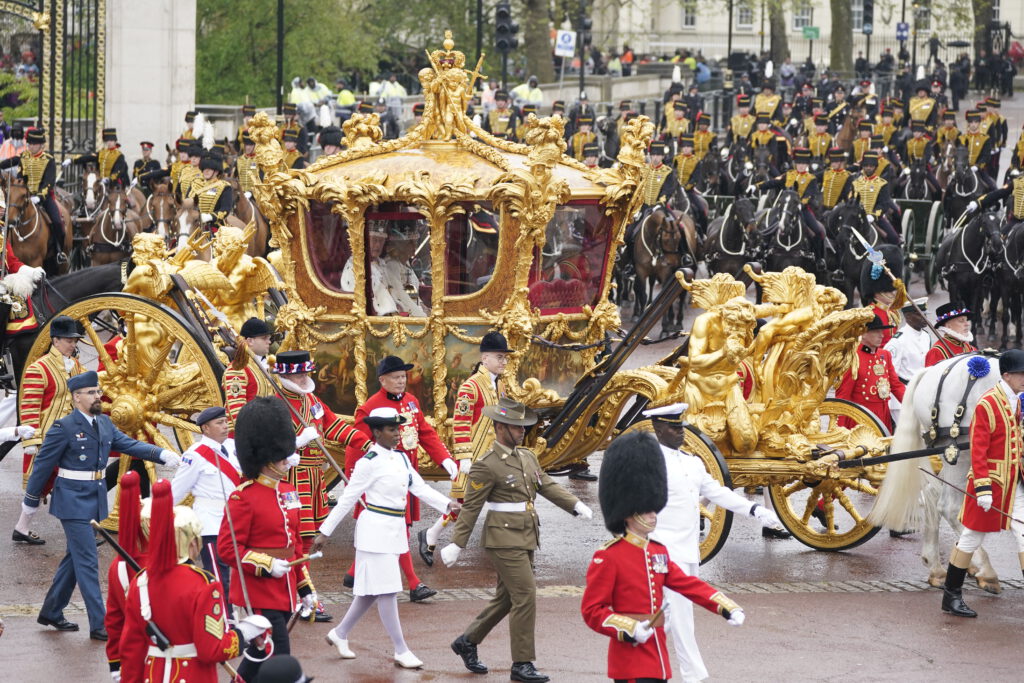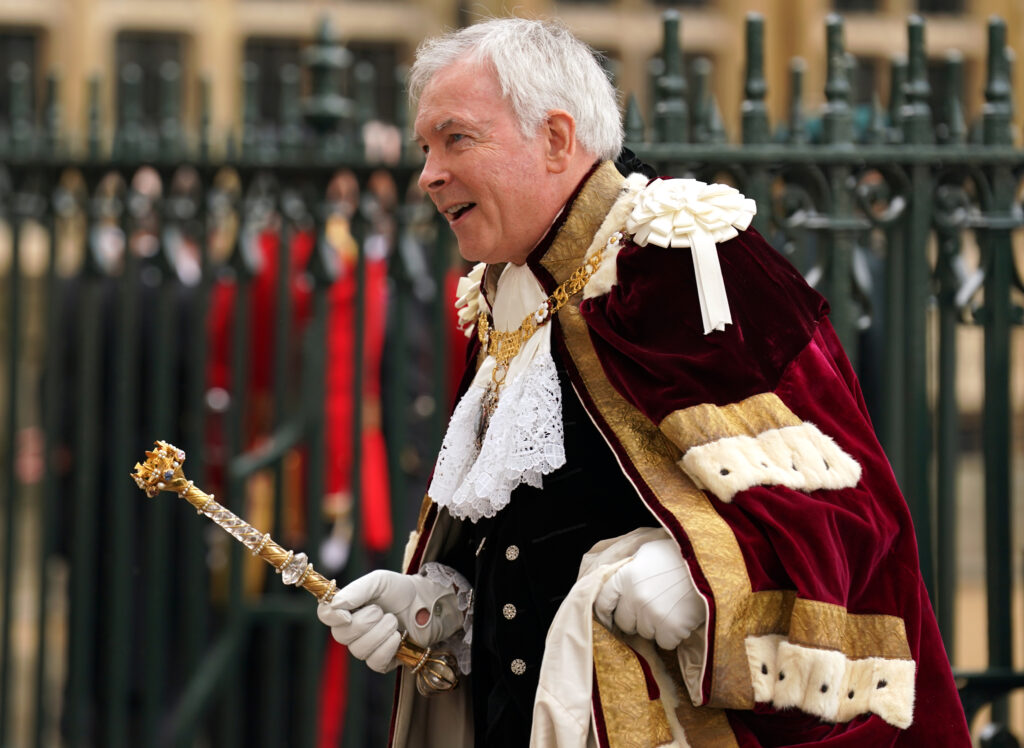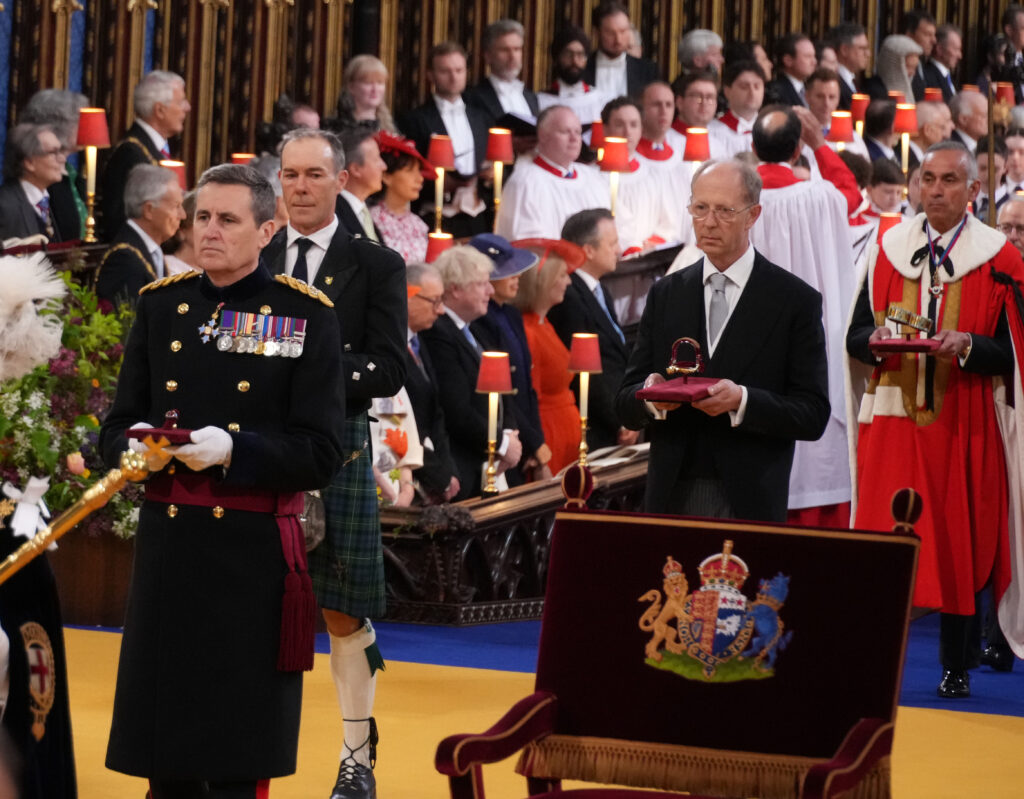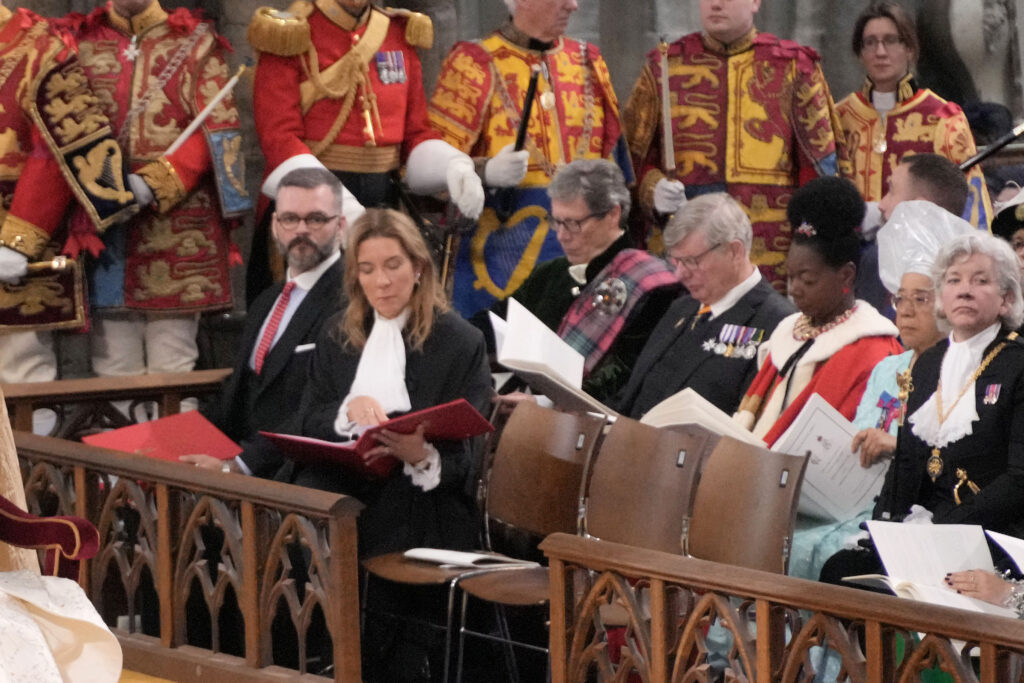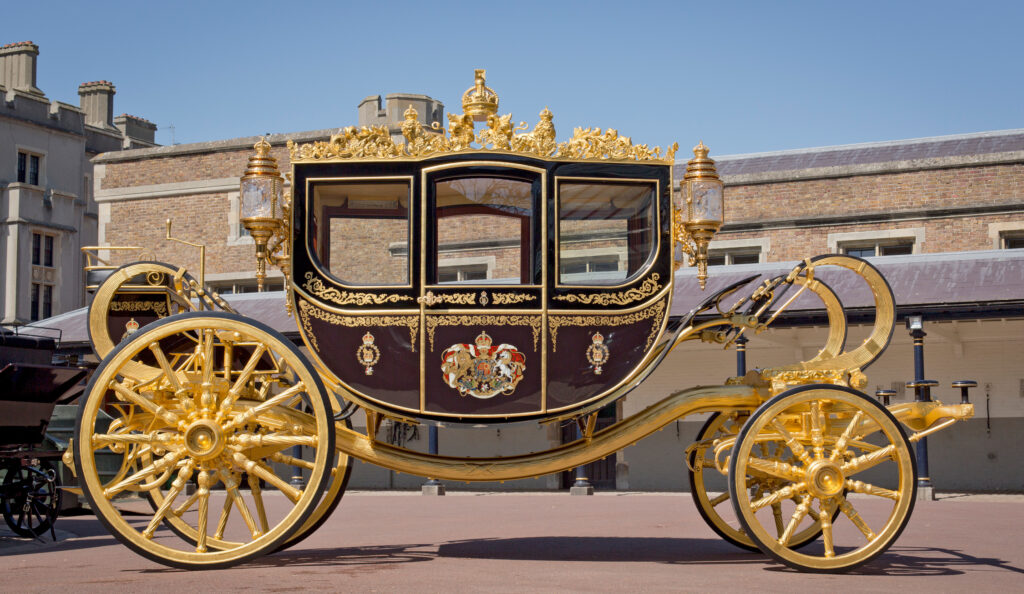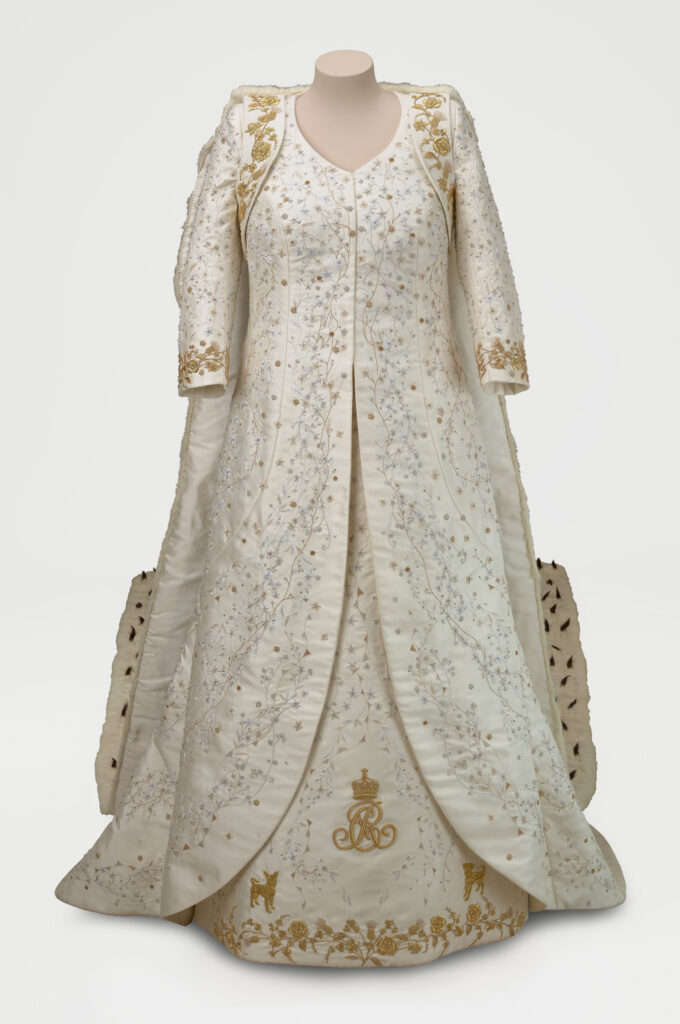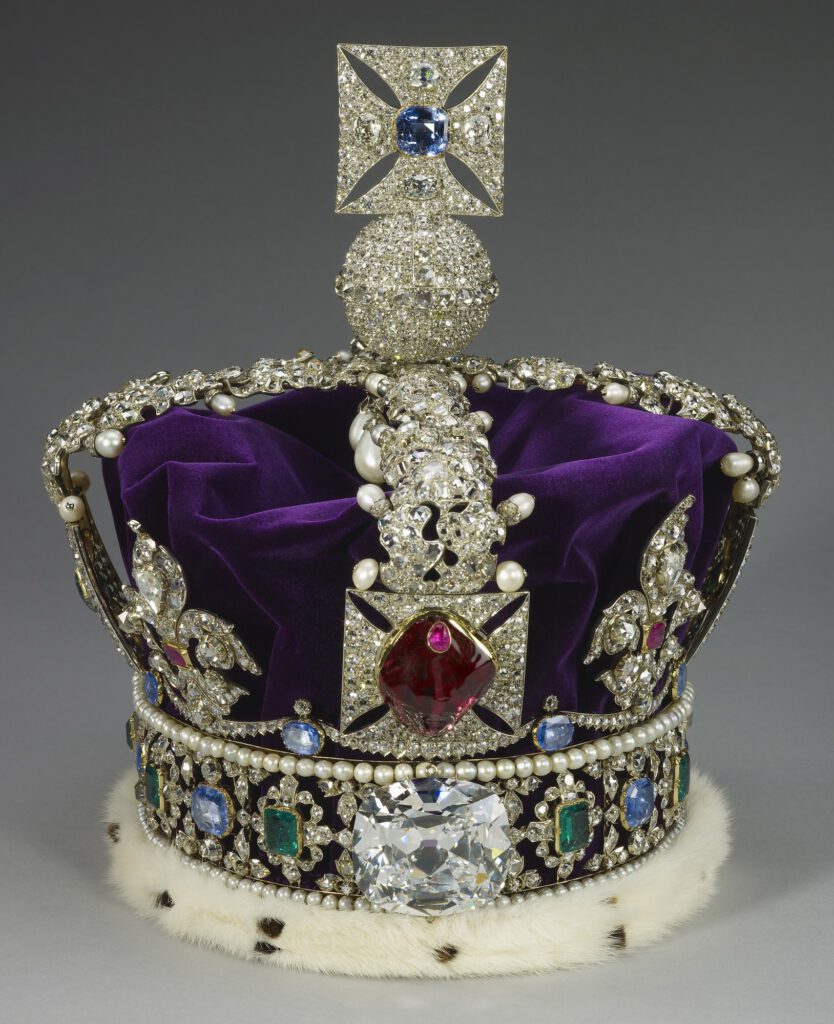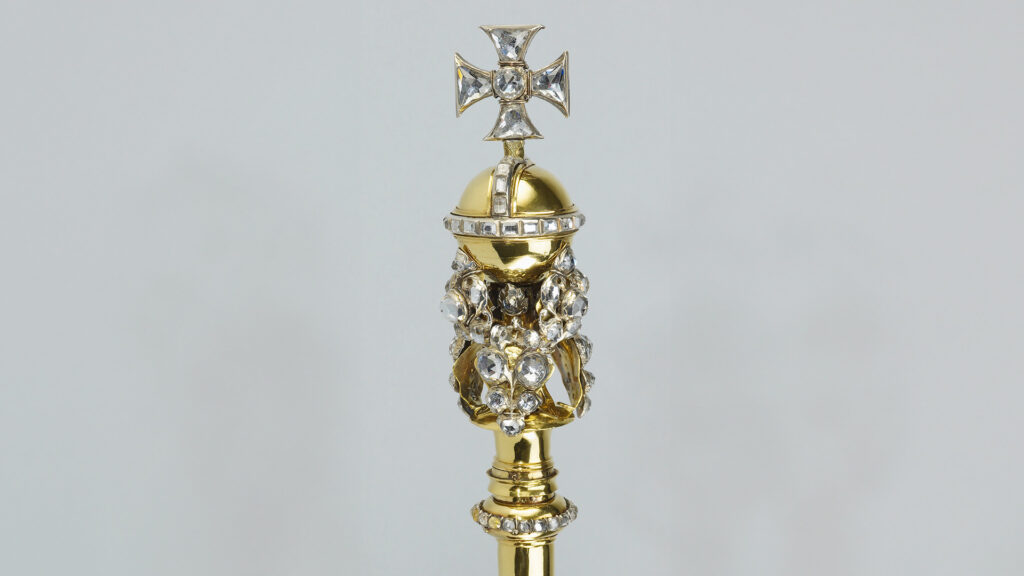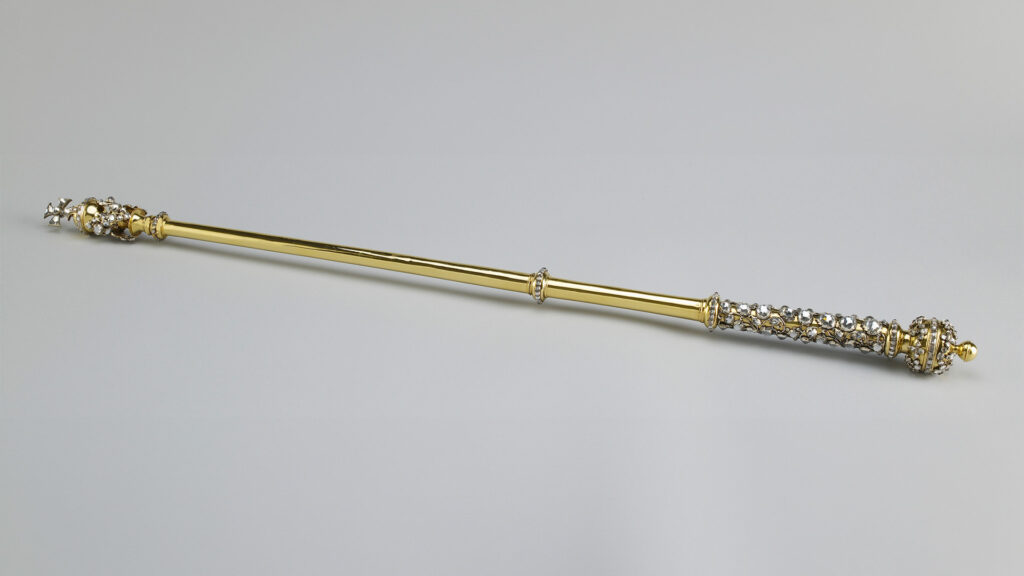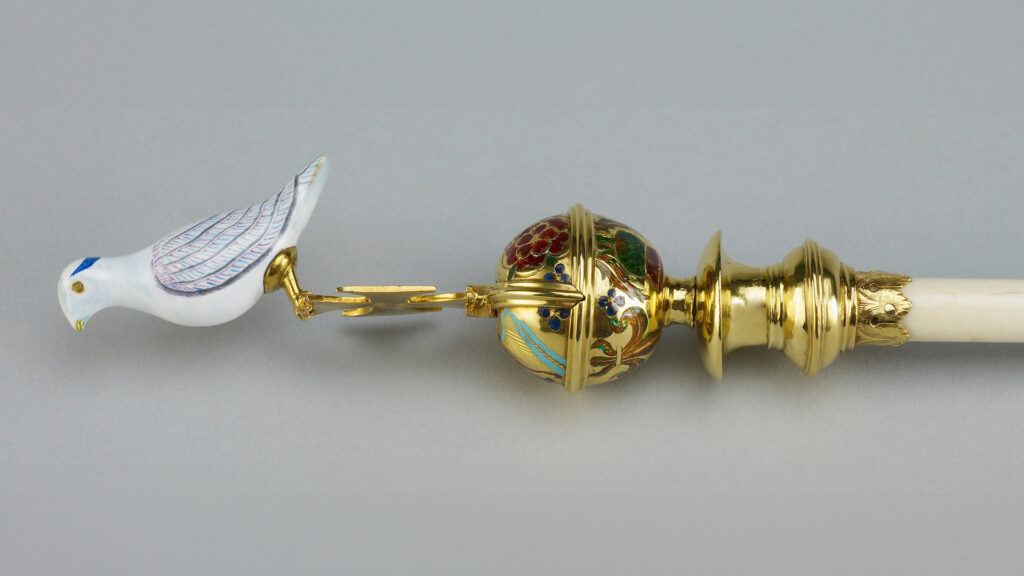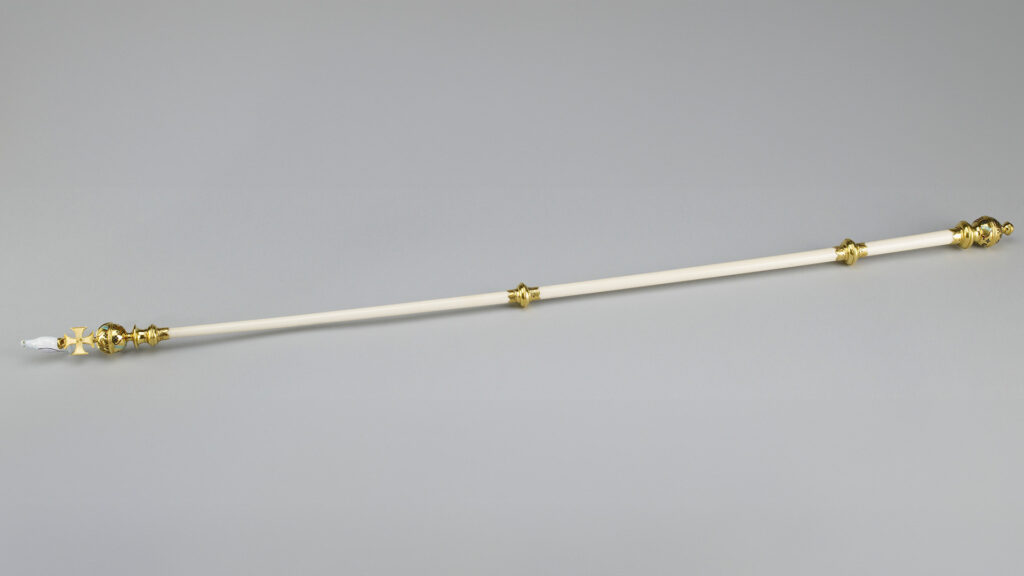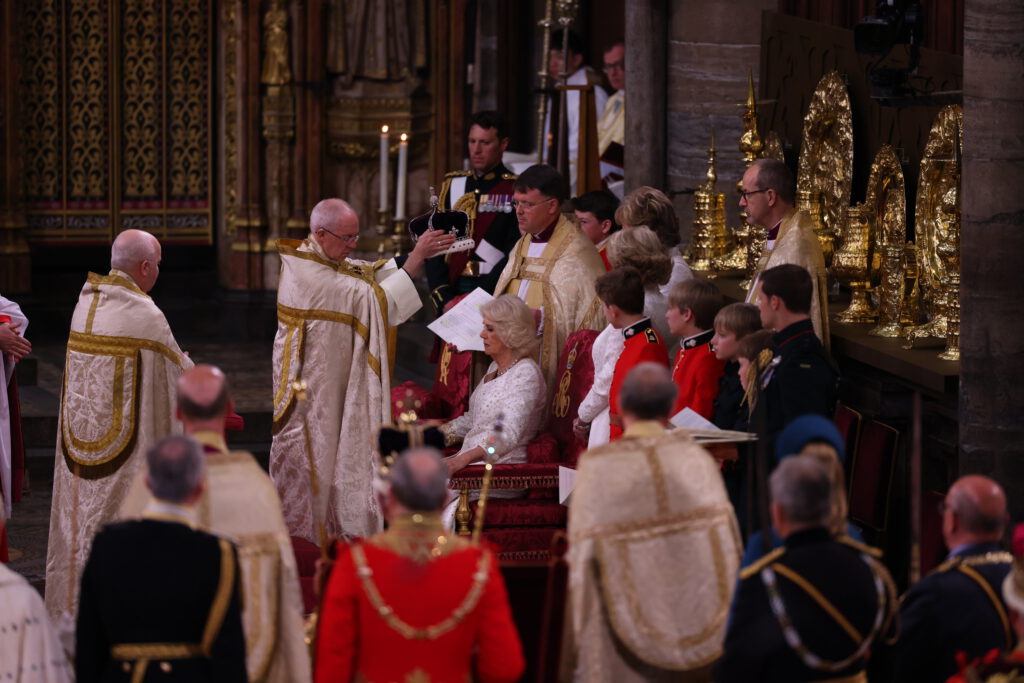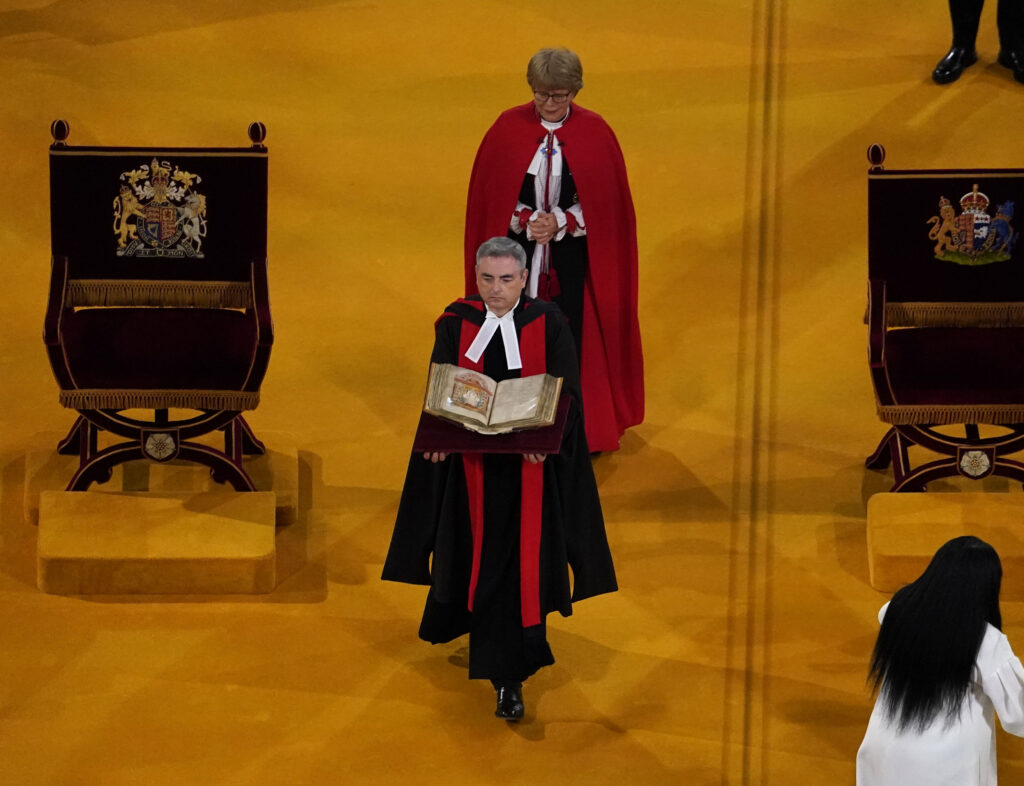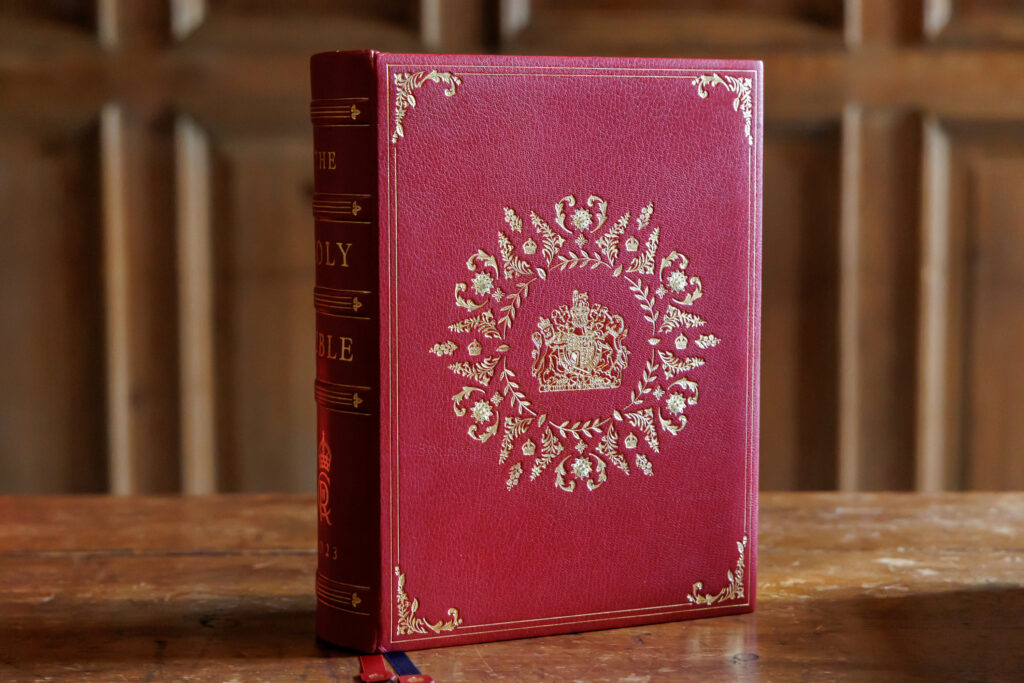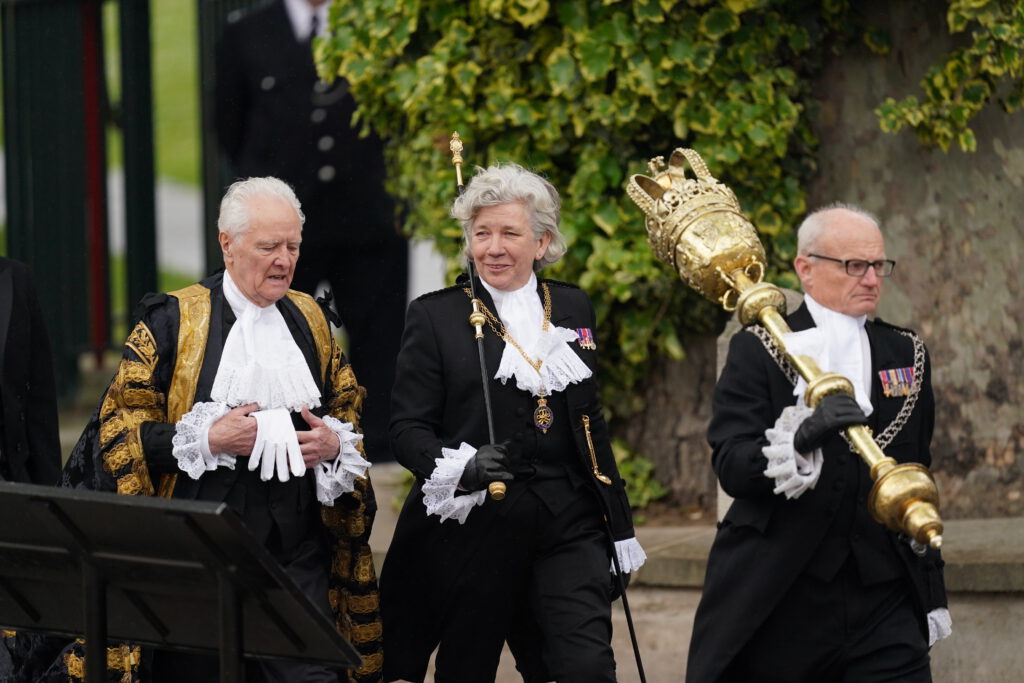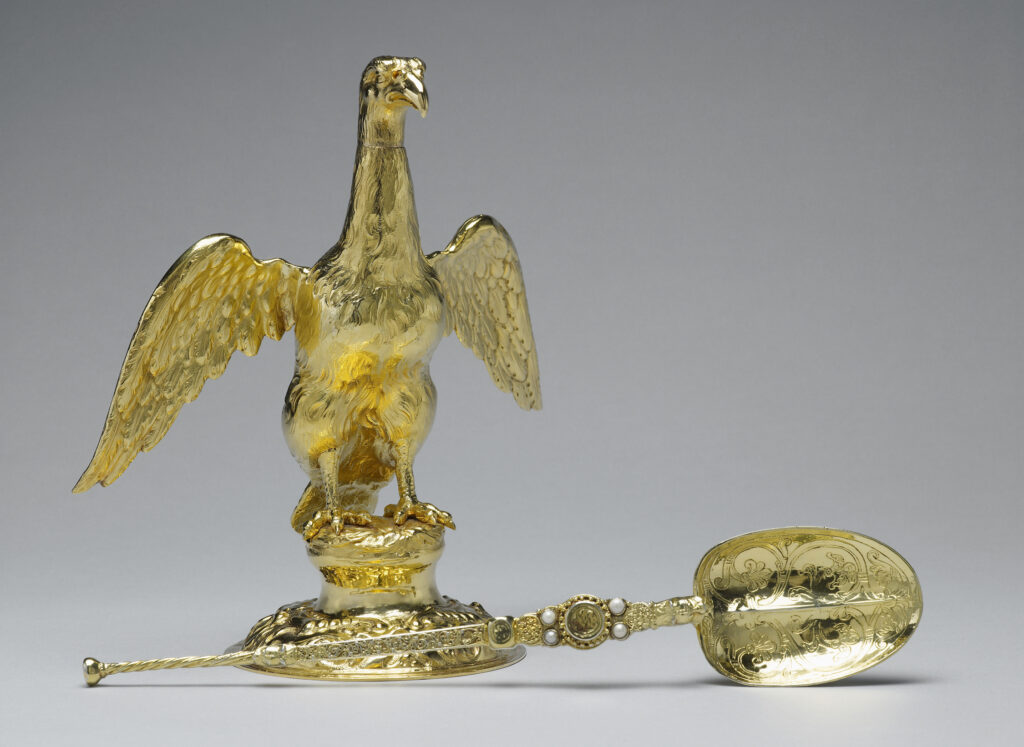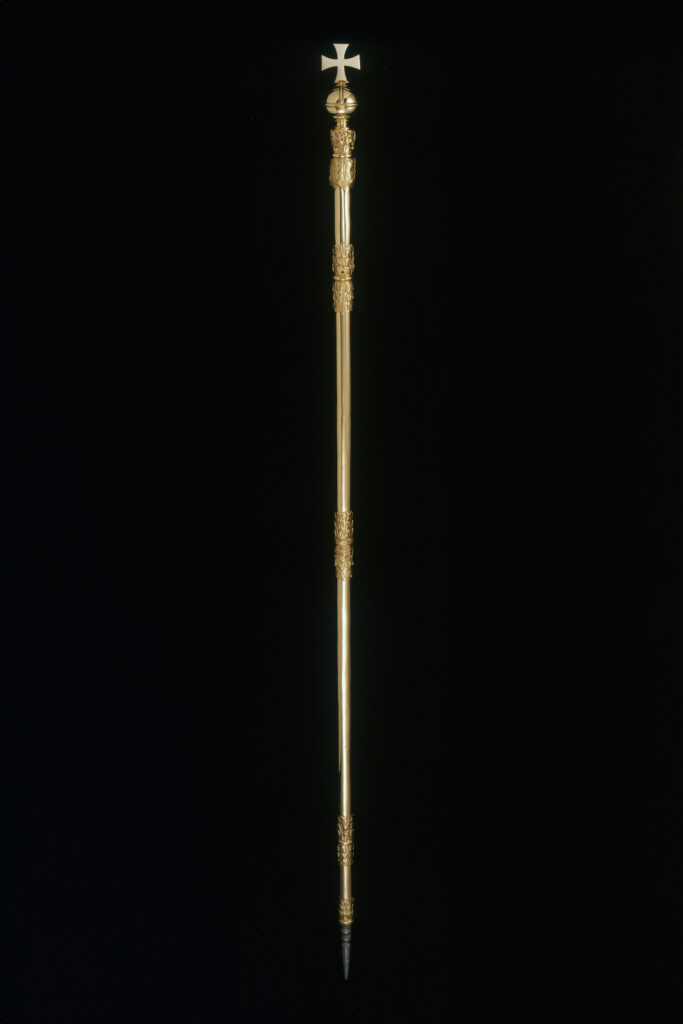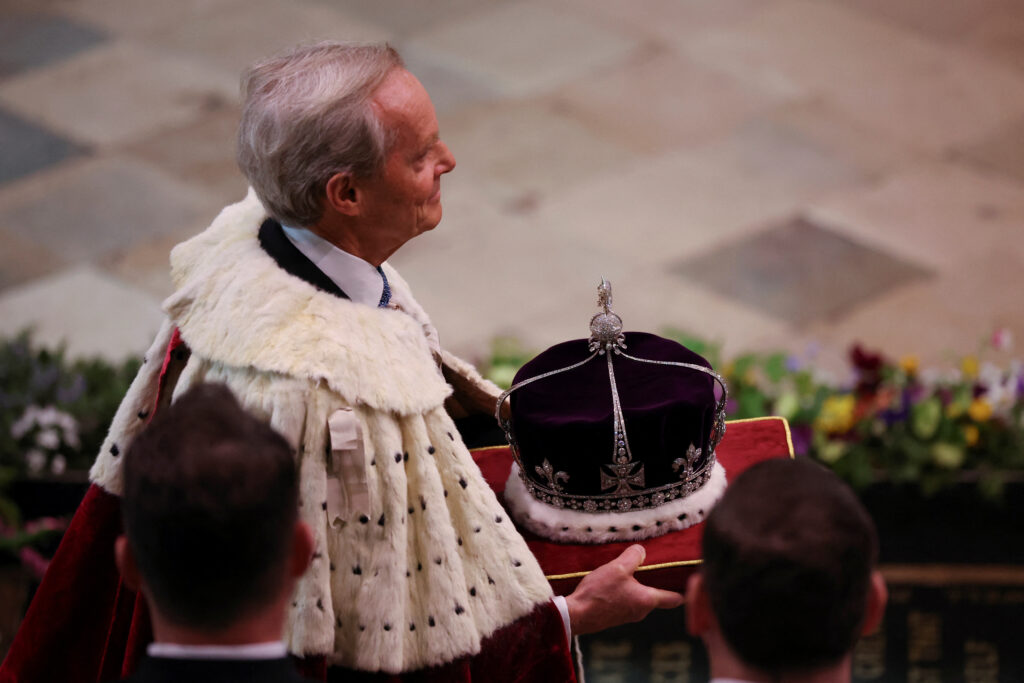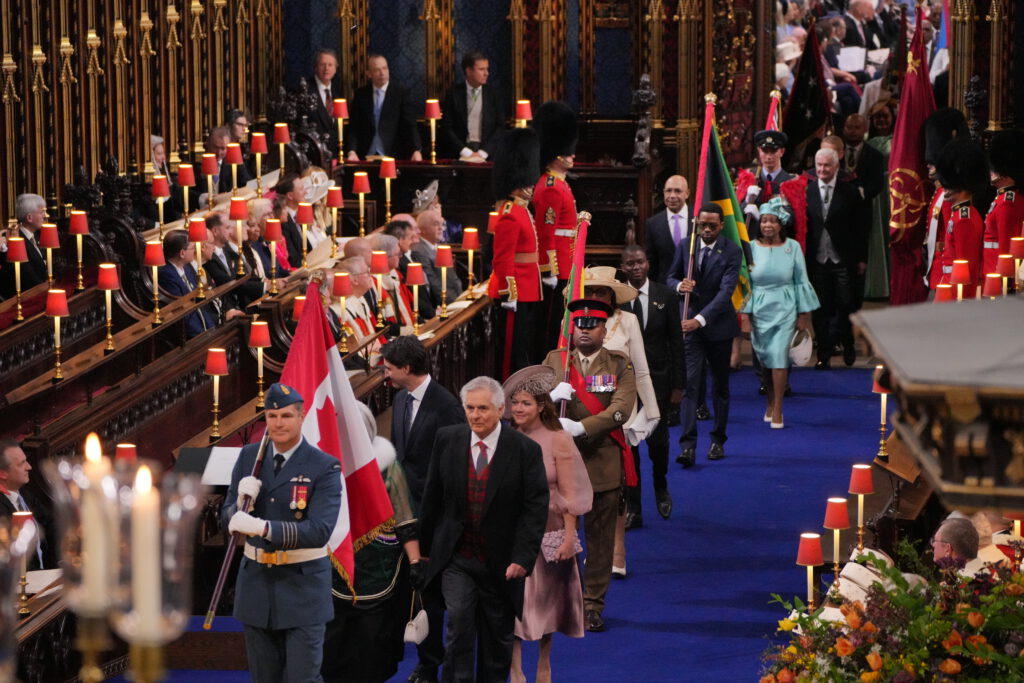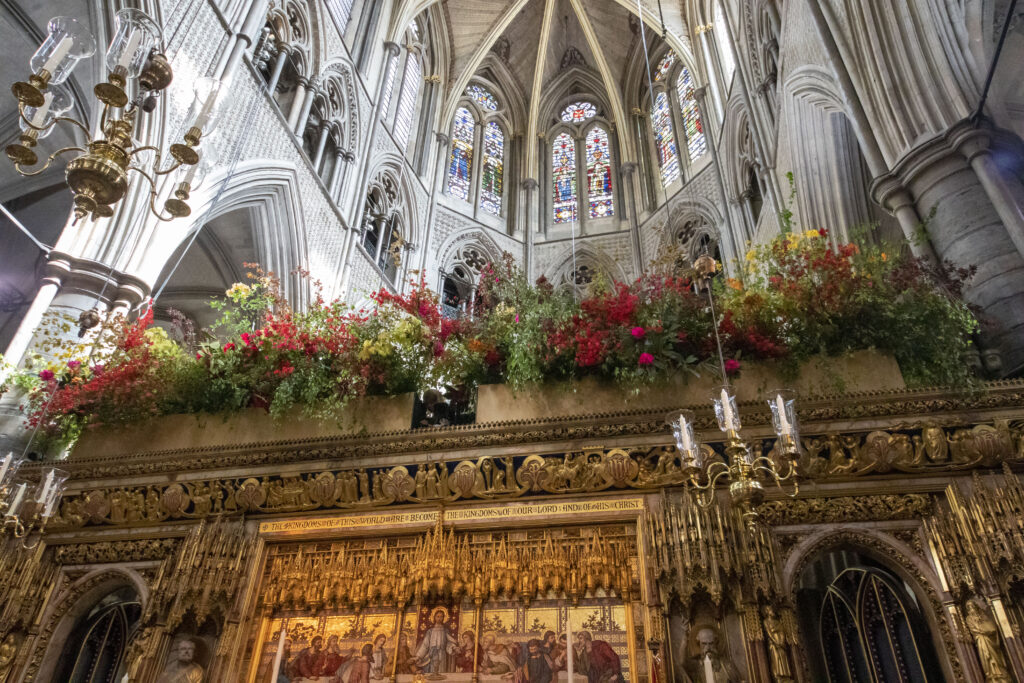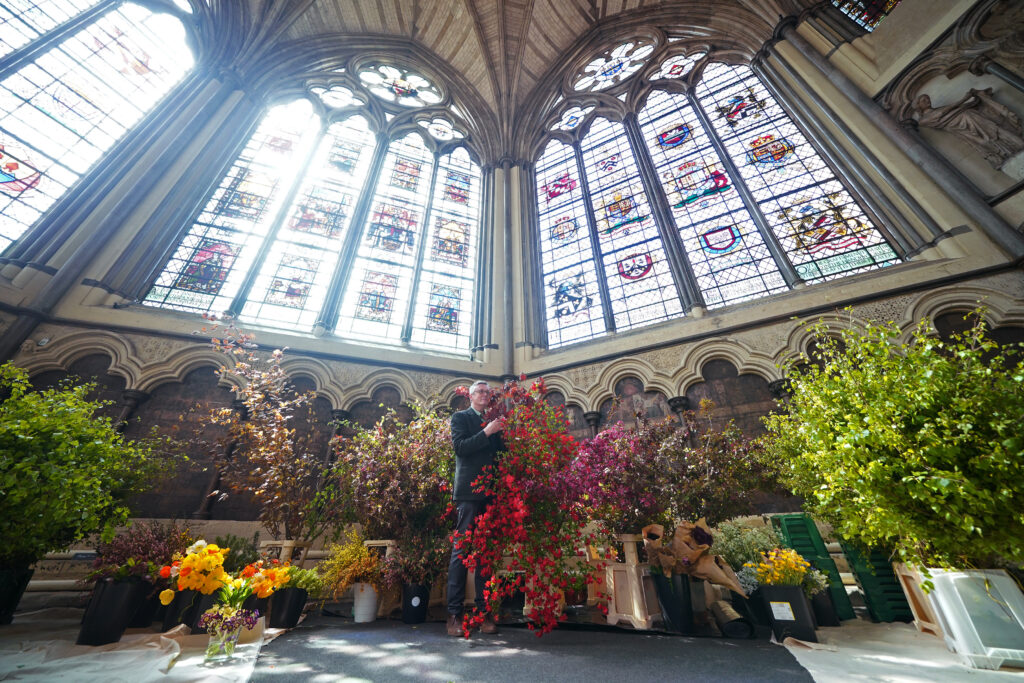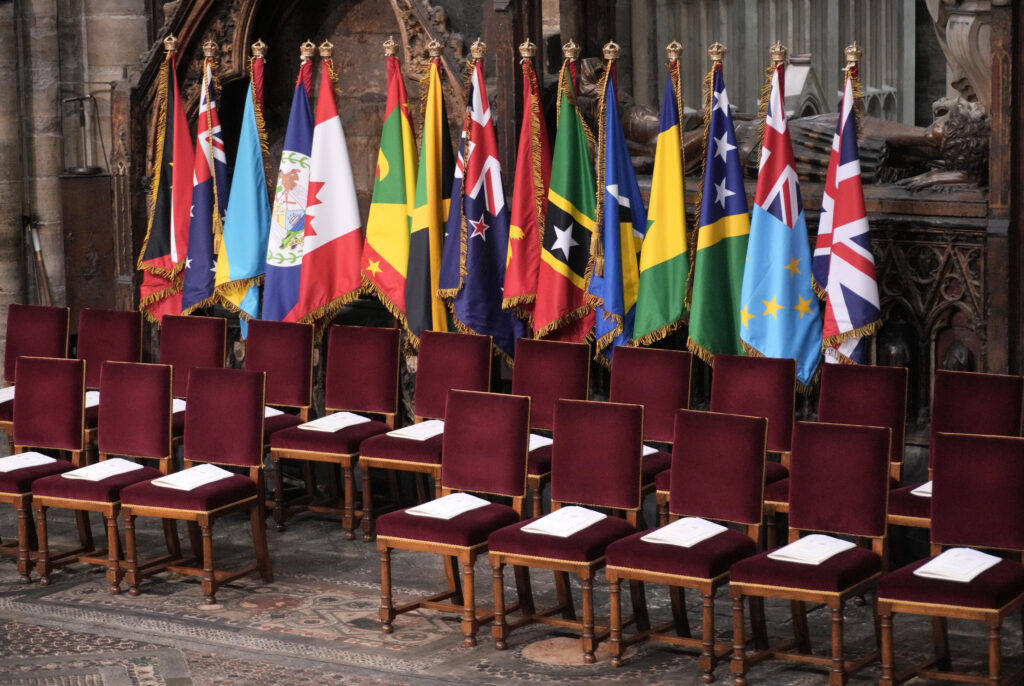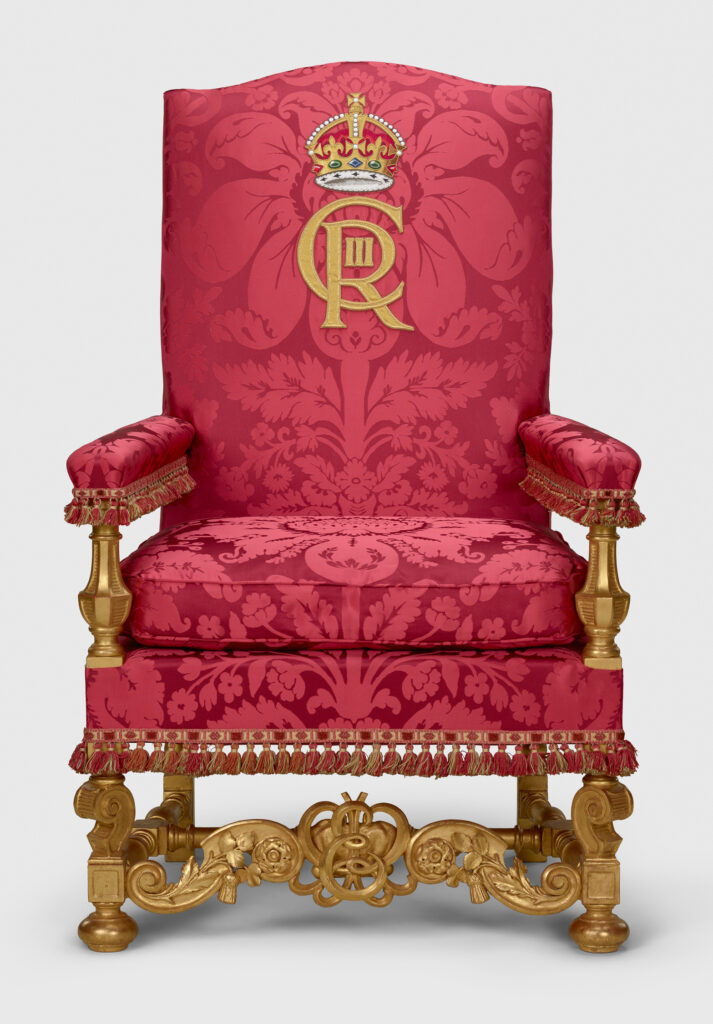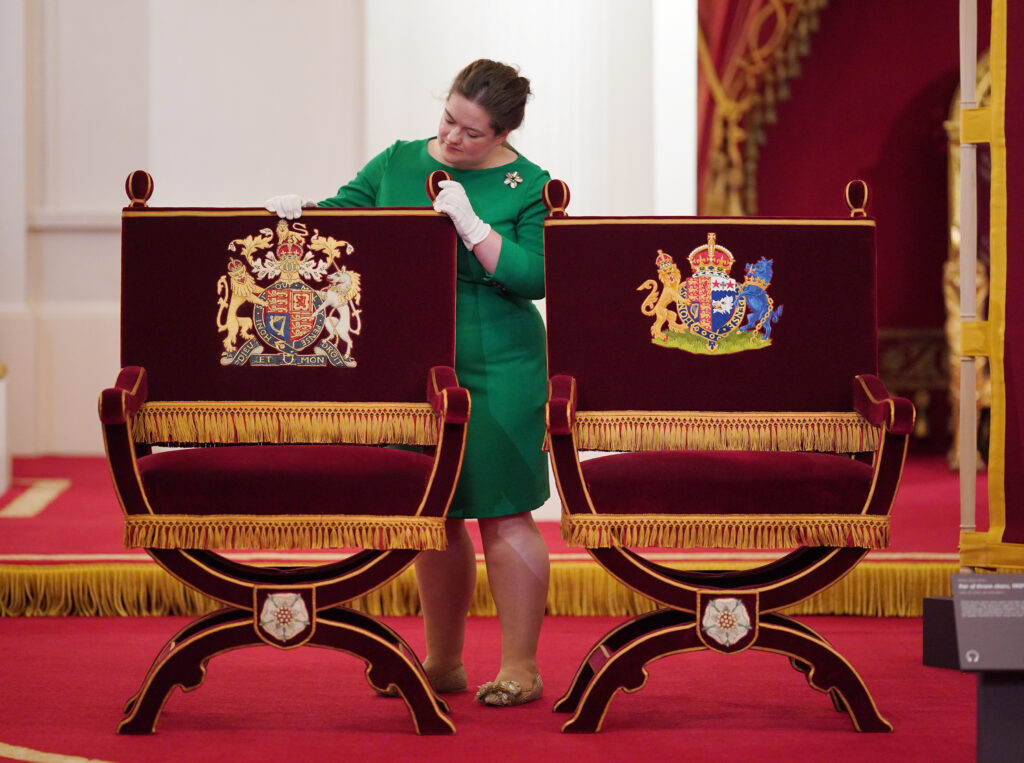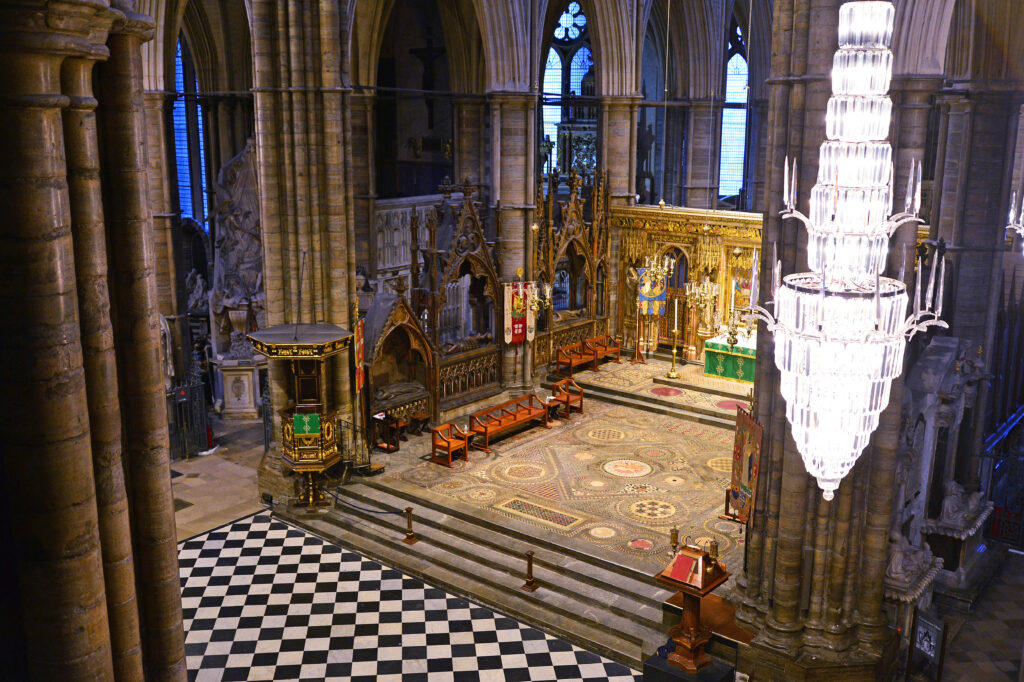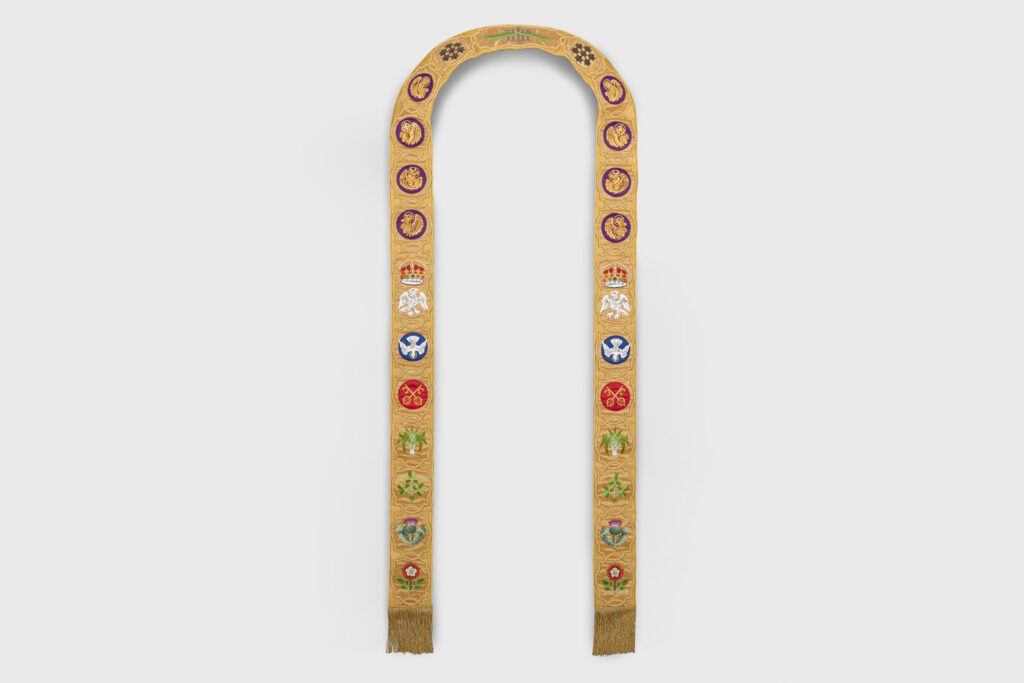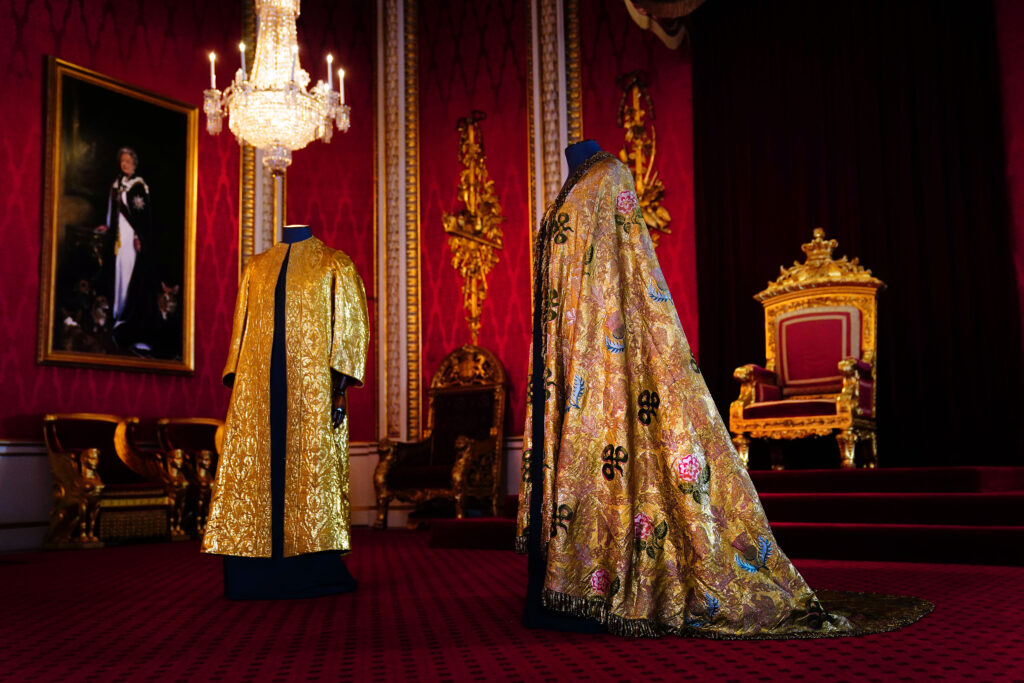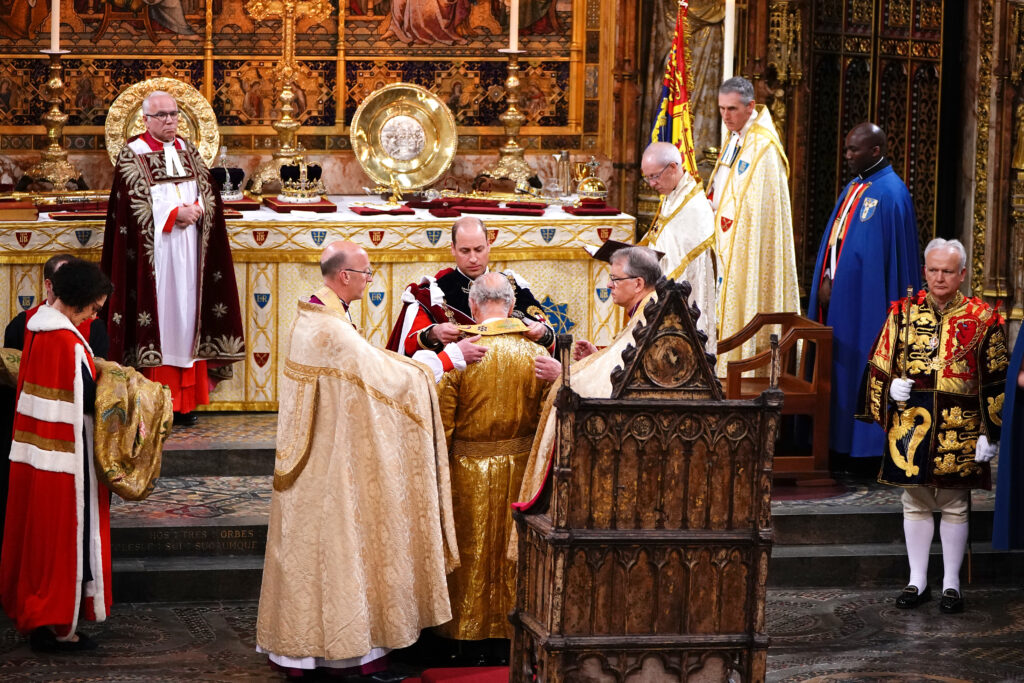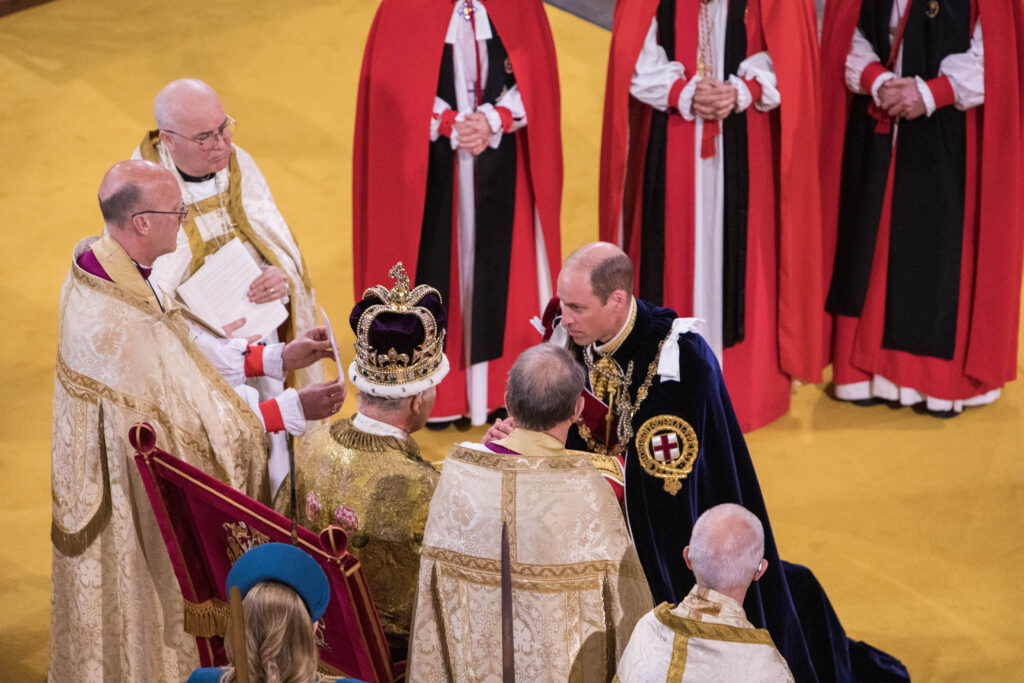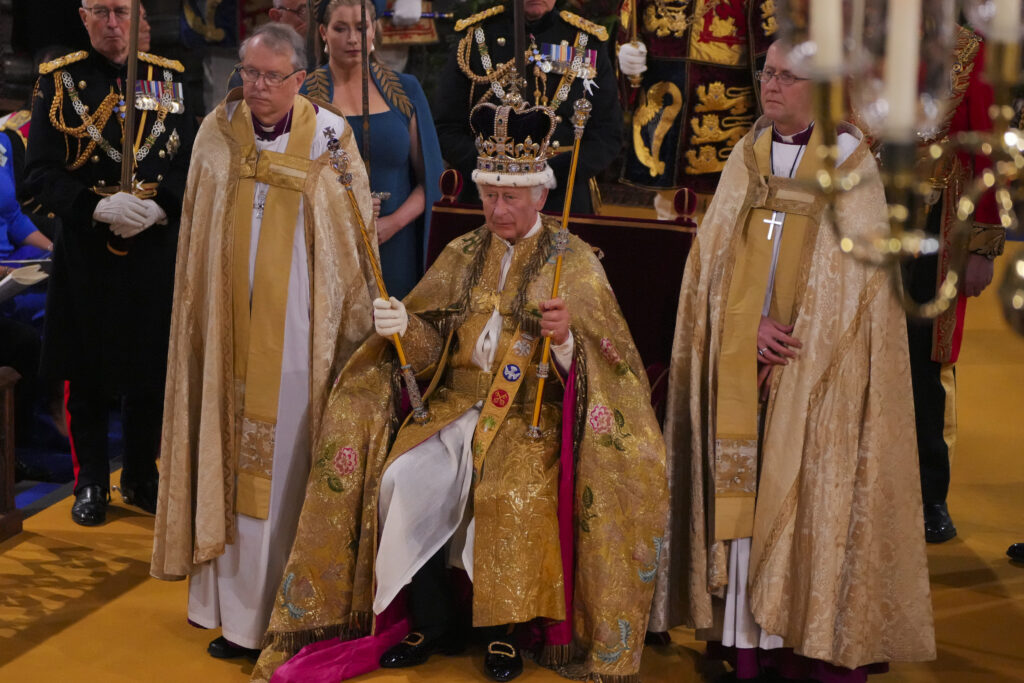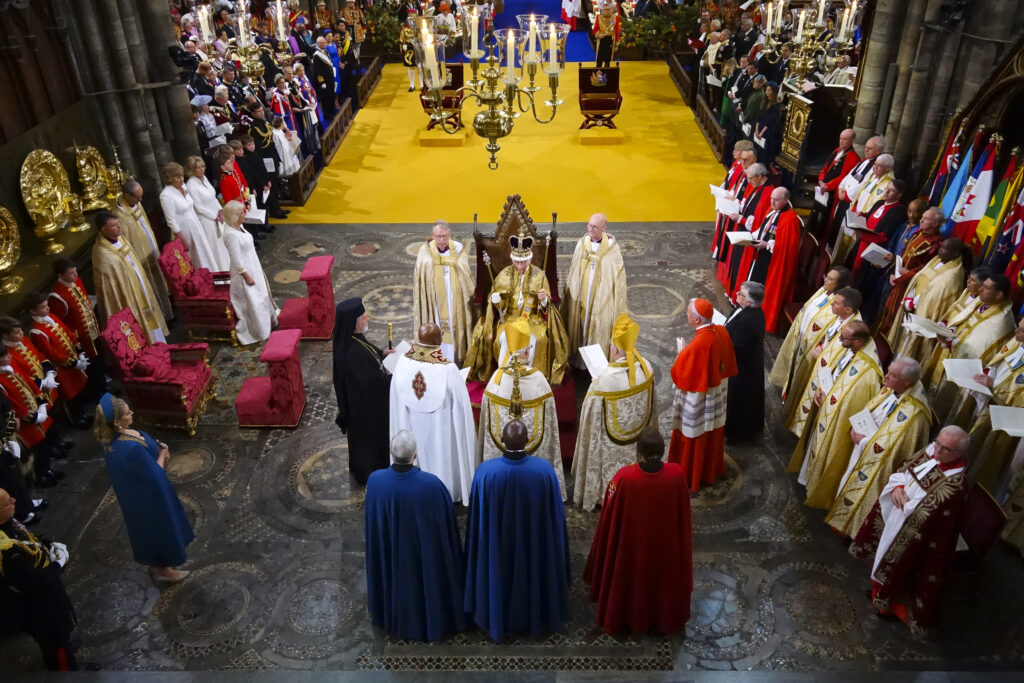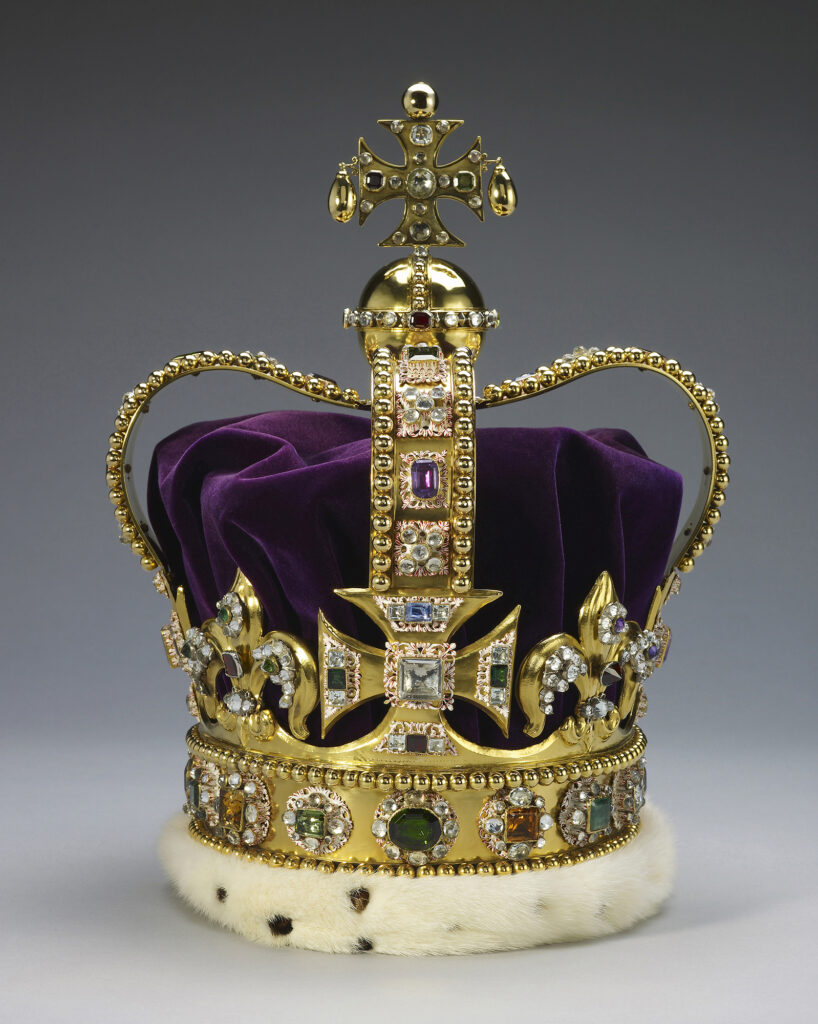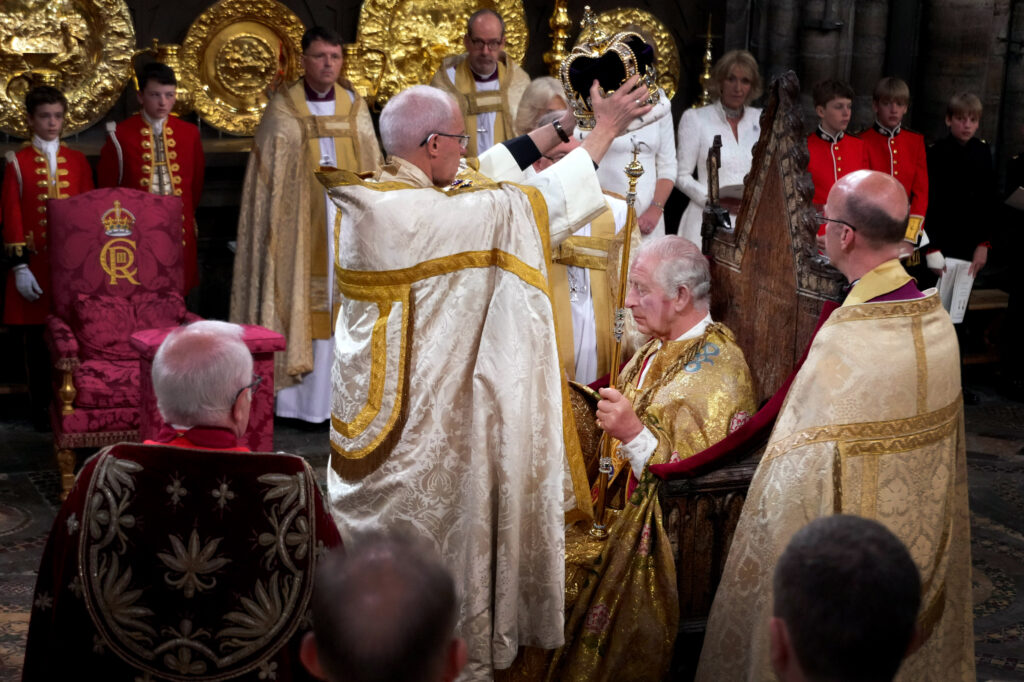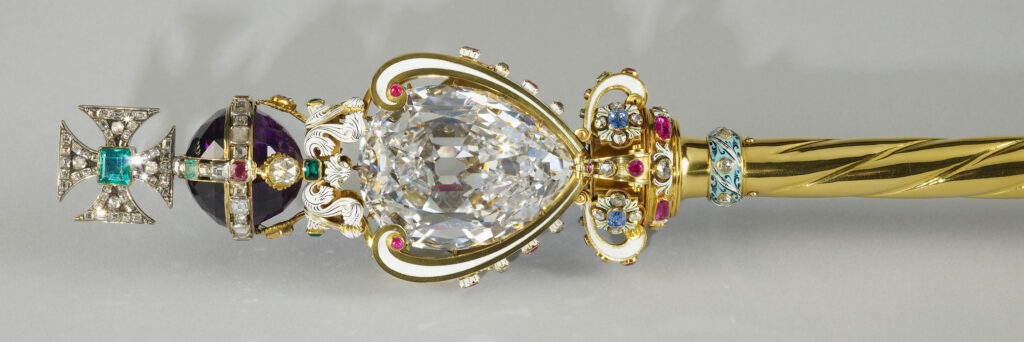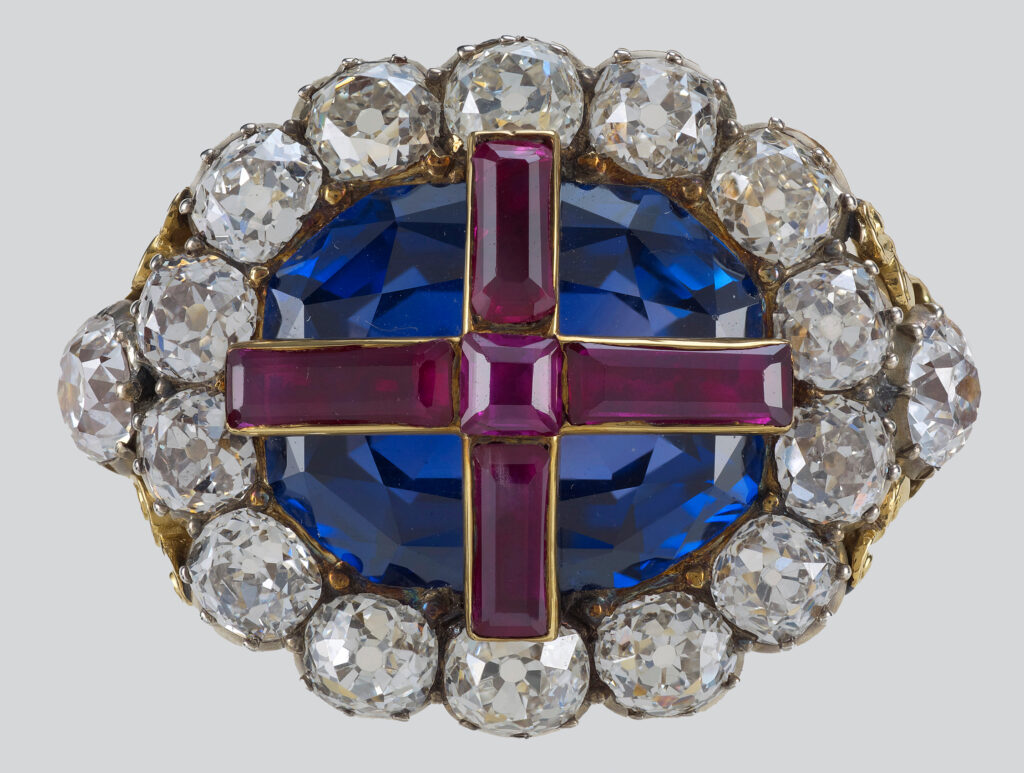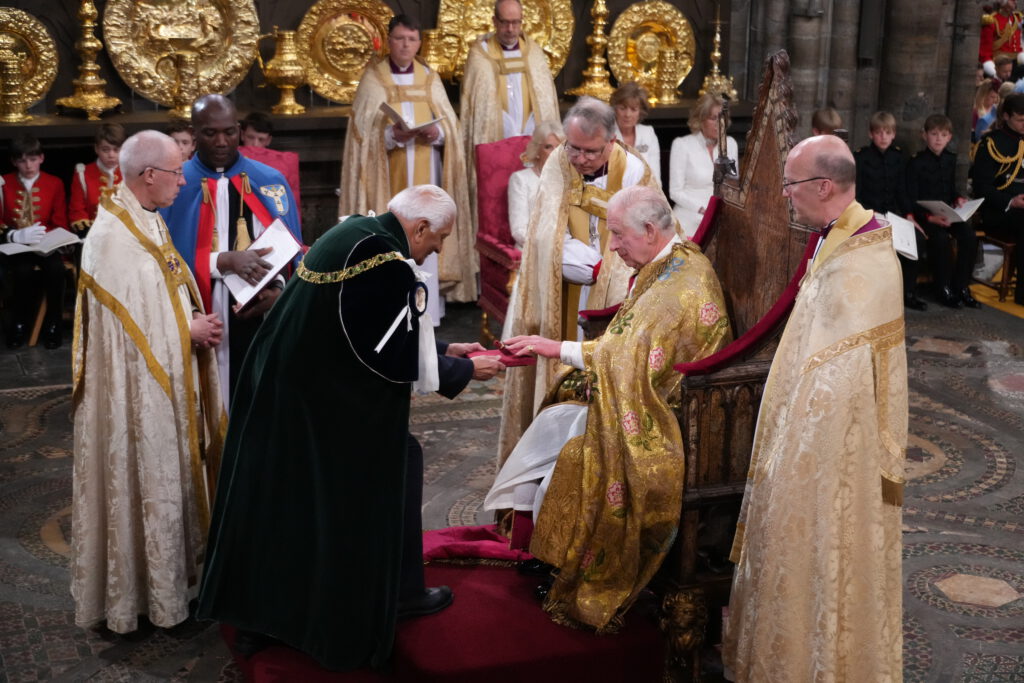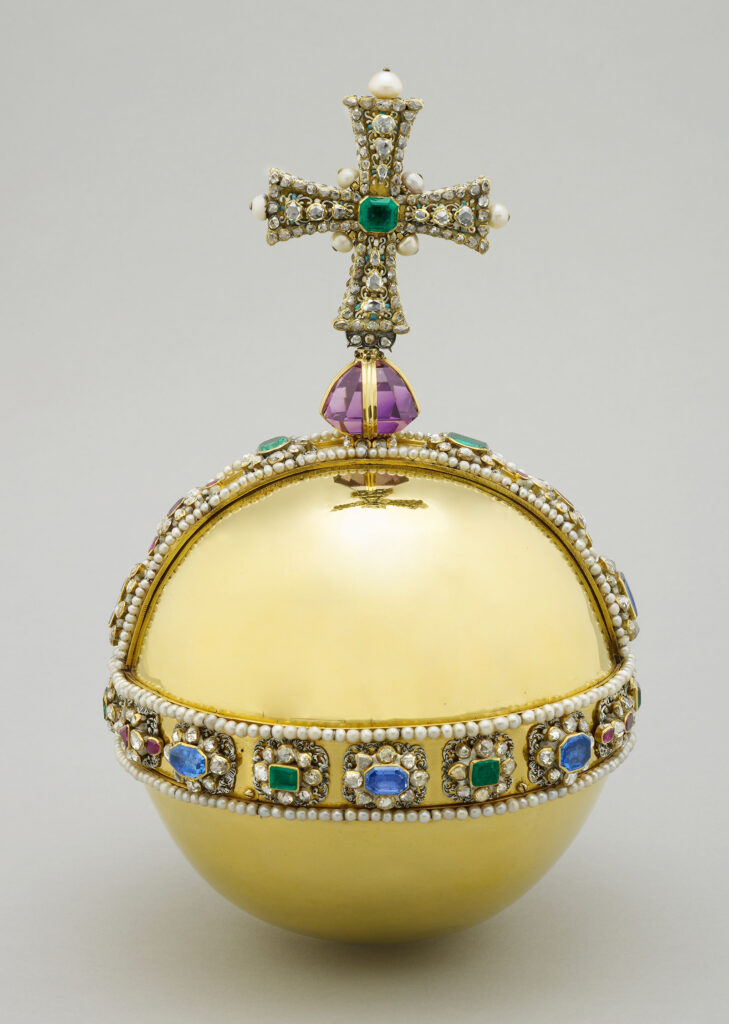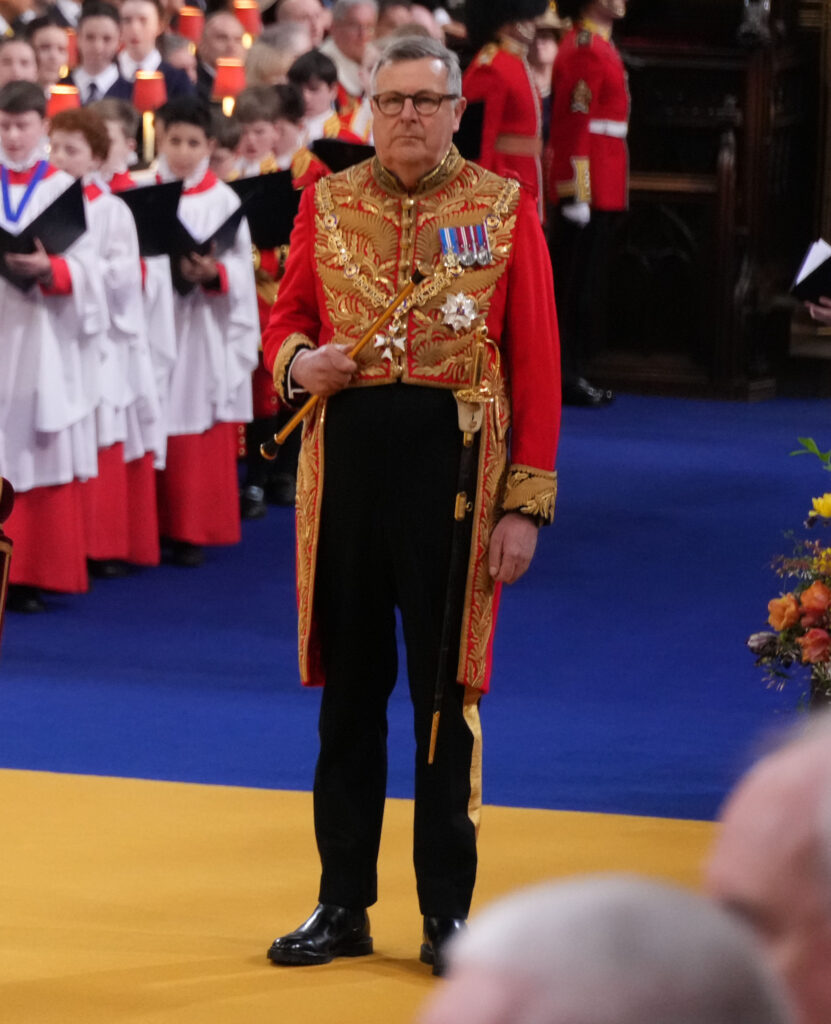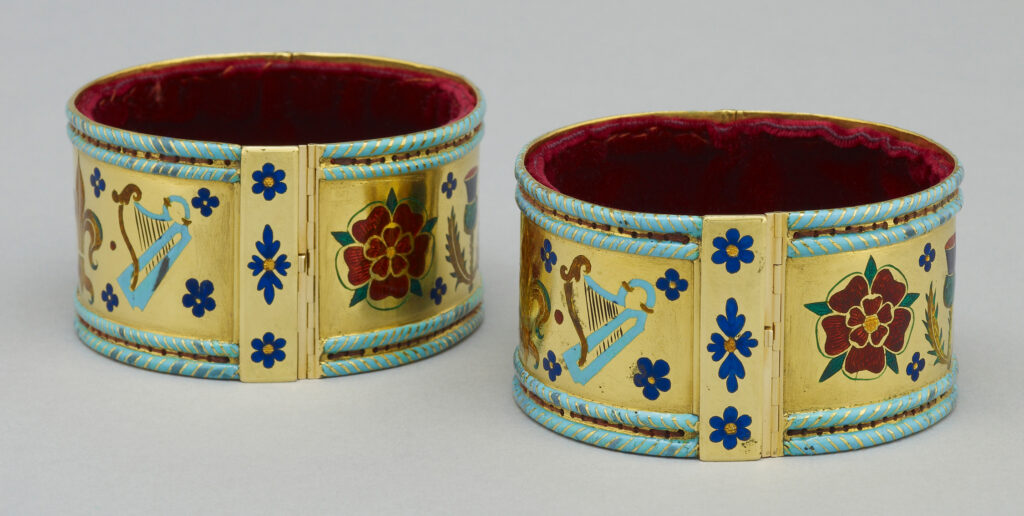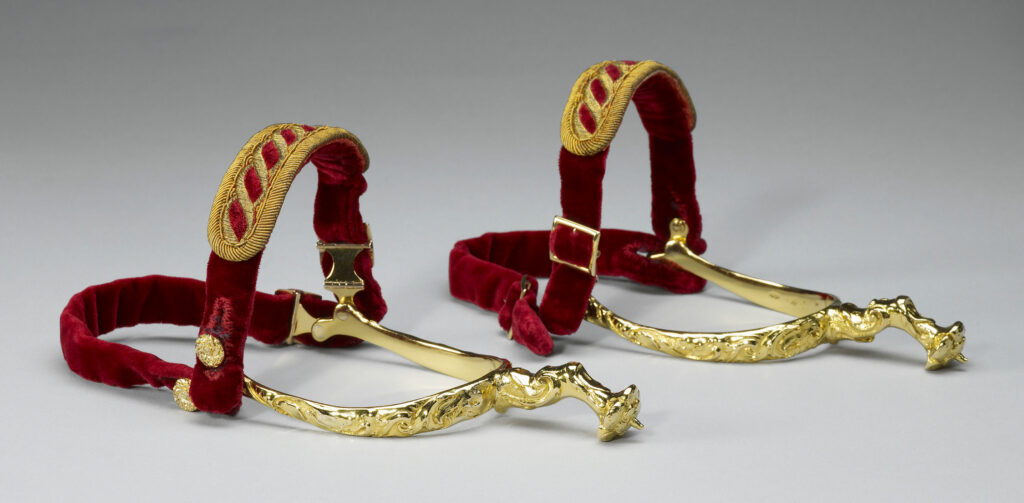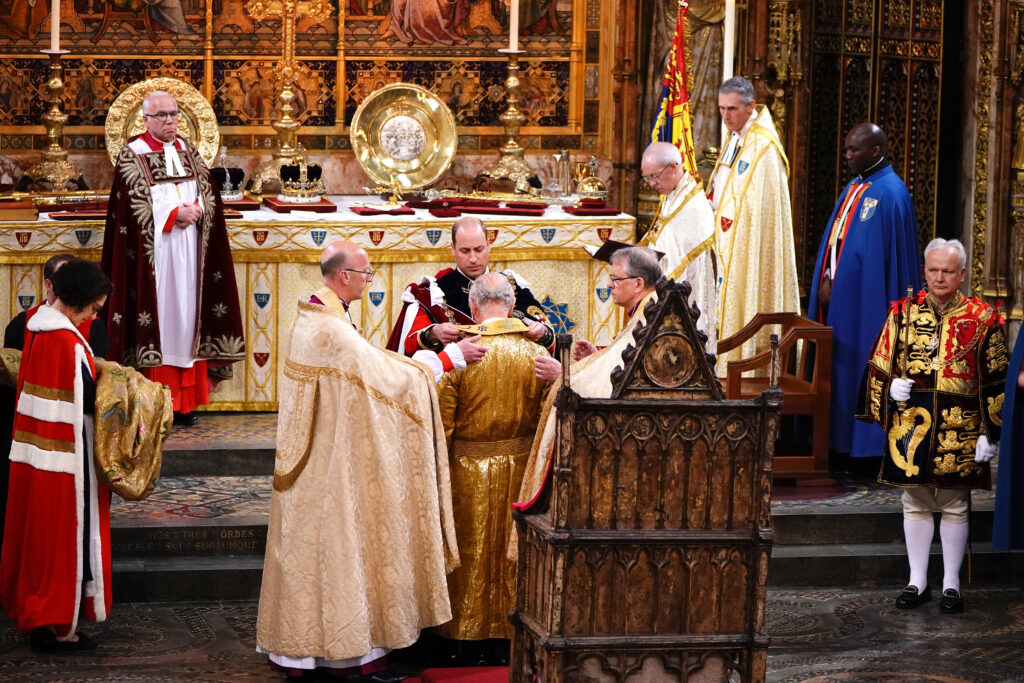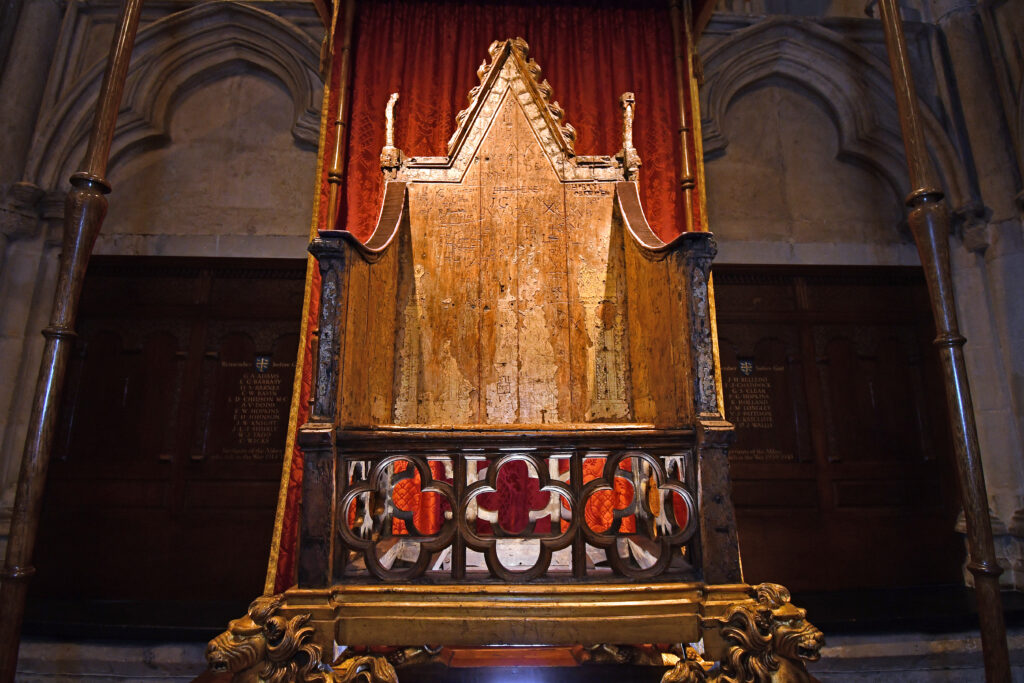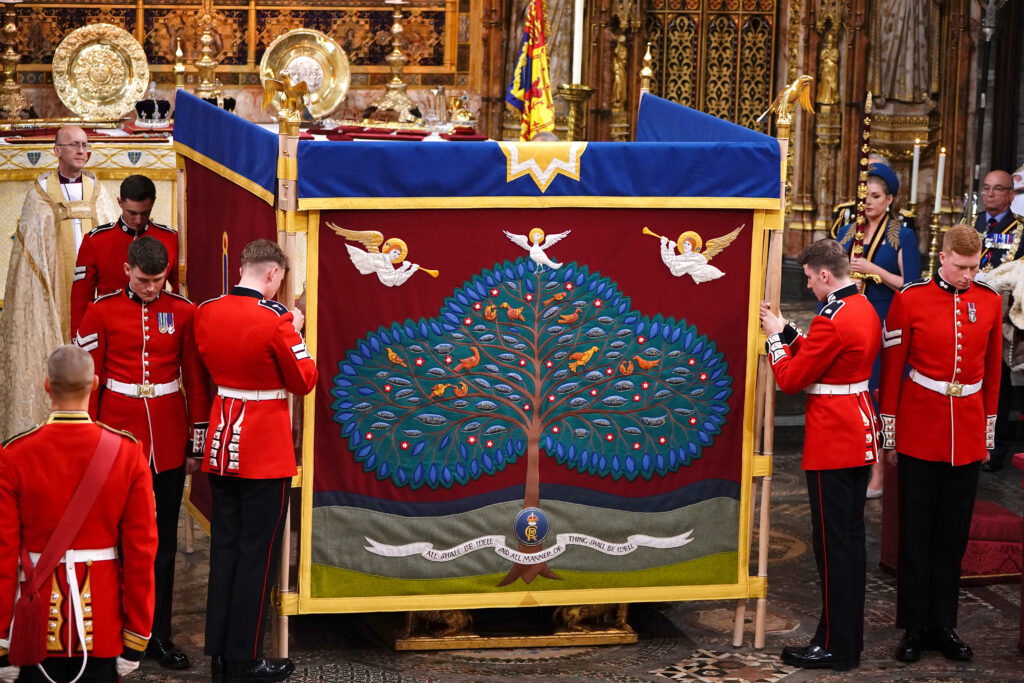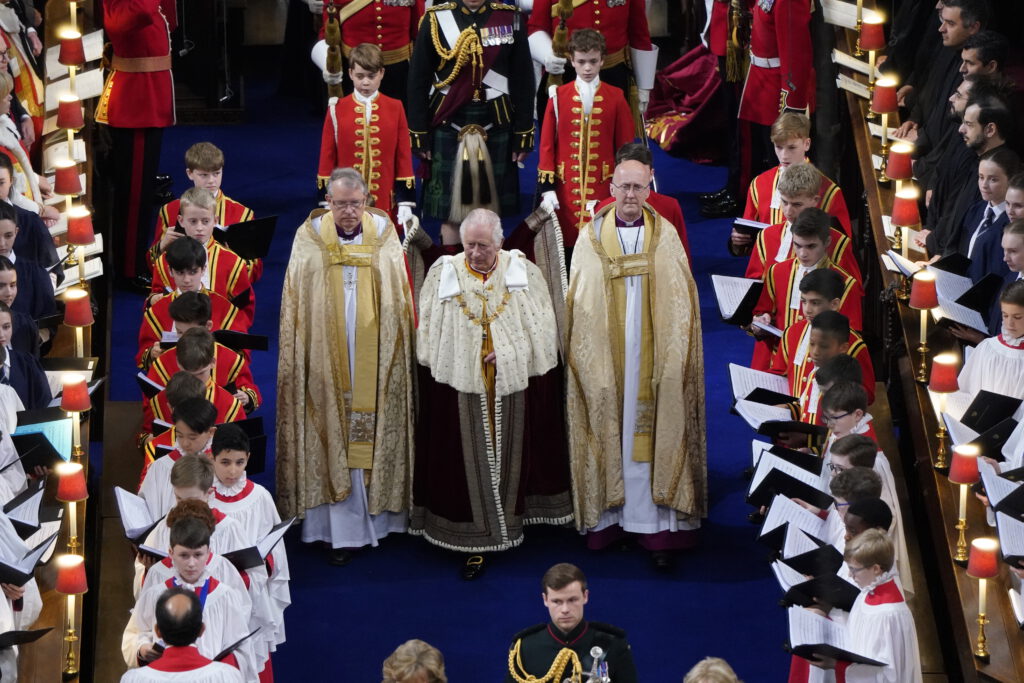At 10:15 the Realm Governors-General, Prime Ministers and representatives began through the Nave and onwards totheir seats in the South Lantern. The procession was led by bearers of their national flags, which were then placed on the North side of the Sacrarium, behind the clergy seats. They entered as follows:
Antigua and Barbuda
Standard Bearer: Kiz Nathaniel
His Excellency Sir Rodney Williams GCMG KGN, Governor-General
Her Excellency Sandra Lady Williams, Spouse of the Governor-General
Honourable Maria Vanessa Browne, Spouse of the Prime Minister
Honourable Gaston Alphonso Browne, Prime Minister
Australia
Standard Bearer: Samantha Kerr
Her Excellency Mrs Linda Hurley, Spouse of the Governor-General
His Excellency General the Honourable David Hurley AC DSC (Retd), Governor-General
Ms Jodie Haydon, Partner of the Prime Minister
The Honourable Anthony Albanese, Prime Minister
The Bahamas
Standard Bearer: Kajar Knowles
Her Excellency Clara Lady Smith, Spouse of the Governor-General
His Excellency The Most Honourable Sir Cornelius A Smith GCMG ON, Governor-General
Mrs Ann-Marie Davis, Spouse of the Prime Minister
The Honourable Philip E Davis KC, Prime Minister
Belize
Standard Bearer: Cameron Gegg
His Excellency Daniel Mendez, Spouse of the Governor-General
Her Excellency Dame Froyla Tzalam GCMG, Governor-General
The Honourable Francis Fonseca, Minister of Education, Culture, Science and Technology
Canada
Standard Bearer: Jeremy Hansen CD
His Excellency Whit Fraser CC, Spouse of the Governor-General
Her Excellency The Right Honourable Mary Simon, Governor-General
Ms Sophie Trudeau, Spouse of the Prime Minister
The Right Honourable Justin Trudeau, Prime Minister
Grenada
Standard Bearer: Johnson Beharry VC COG
Her Excellency Dame Cecile La Grenade, GCMG OBE, Governor-General
Honourable Dickon Mitchell, Prime Minister
Jamaica
Standard Bearer: David Salmon
Her Excellency The Most Honourable Patricia, Lady Allen, Spouse of the Governor-General
His Excellency The Most Honourable Sir Patrick Allen, GCMG ON CD, Governor-General
New Zealand
Standard Bearer: Hayden Smith
His Excellency Dr Richard Davies, Spouse of the Governor-General
Her Excellency The Right Honourable Dame Cindy Kiro, GNZM QSO, Governor-General
The Right Honourable Chris Hipkins, Prime Minister
Papua New Guinea
Standard Bearer: Noel Leana
Her Excellency Emeline, Lady Tufi Dadae, Spouse of the Governor-General
His Excellency Grand Chief Sir Bob Bofeng Dadae, GCMG GCL, Governor-General
Honourable Justin Tkachenko BEM OL, Foreign Minister
Ms Savannah Raka Tkachenko, Daughter of the Foreign Minister
St Christopher and Nevis
Standard Bearer: Jessica Dunrod
Mr Edward Martin, Guest of the Governor-General
Her Excellency Dame Marcella Liburd, GCMG, Governor-General
The Honourable Dr Terrance Drew, Prime Minister
Saint Lucia
Standard Bearer: Chelsa Jongue
Her Excellency Anysia Charles, Spouse of the Acting Governor-General
His Excellency Errol Charles, Acting Governor-General
Mrs Sonia Severin, Spouse of the High Commissioner
His Excellency Anthony B. Severin, High Commissioner
St Vincent and the Grenadines
Standard Bearer: Adaiah Providence-Culzac
His Excellency Hugh Dougan, Spouse of the Governor-General
Her Excellency Dame Susan Dougan GCMG OBE, Governor-General
Mrs Eloise Gonsalves, Spouse of the Prime Minister
The Honourable Dr Ralph E. Gonsalves, Prime Minister
Solomon Islands
Standard Bearer: Moses William Mose
Her Excellency Mary Lady Vunagi, Spouse of the Governor-General
His Excellency Sir David Vunagi GCMG, Governor-General
Madam Jocelyn Manele, Spouse of Minister for Foreign Affairs
Honourable Jeremiah Manele, Minister for Foreign Affairs
Tuvalu
Standard Bearer: Anya Barber
Her Excellency Tangira, Lady Tofinga, Spouse of the Governor-General
His Excellency The Reverend Sir Tofinga Falani GCMG MBE, Governor-General
The United Kingdom
Standard Bearer: CWO Elliott Tyson-Lee
Mrs Akshata Murty, Spouse of the Prime Minister
The Rt Hon Rishi Sunak MP, Prime Minister


